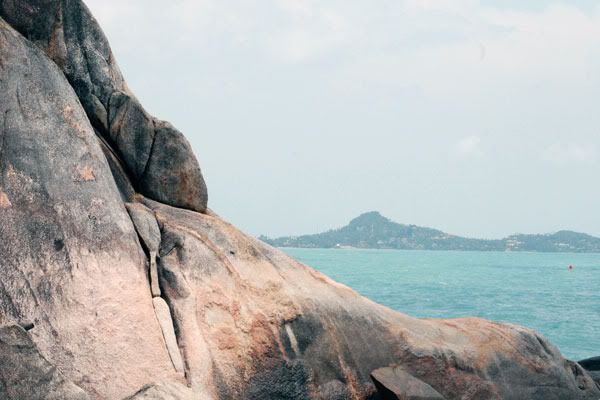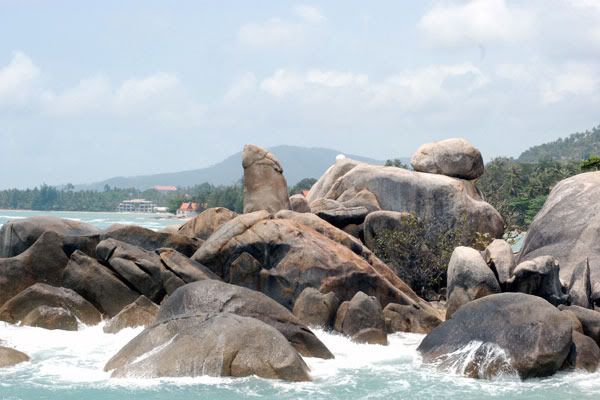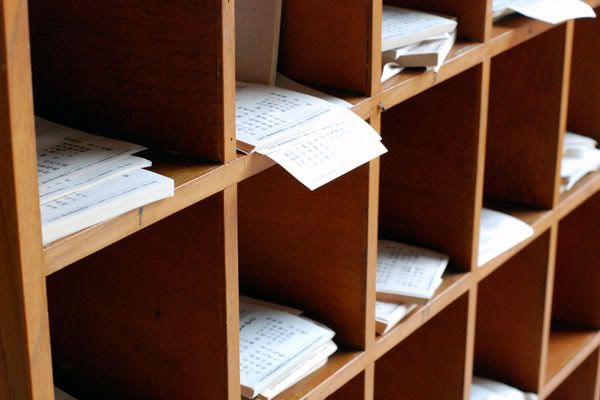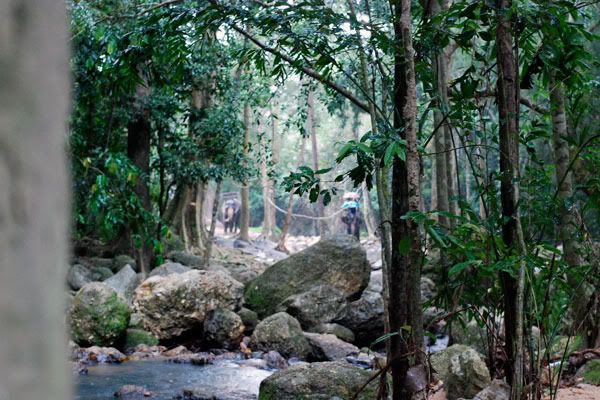In honor of my 29th birthday, which I celebrated on March 29th, I thought I’d mix things up and present some things I’ve never shared with my wonderful readers:
1. Although I’ve lived in Seoul in the past, I actually take an hour-long bus ride to come to Seoul these days.
2. I work with Steve the Qi Ranger.
3. I’ve been swing dancing since college, but I can’t salsa dance to save my life. Guess I’m screwed if I ever go to a Latin American club.
4. The building I work in is right next door to the building I live in – it actually takes more time going up and down the elevators than it does to walk between the buildings.
5. I really miss racquetball, but I’m terrible at tennis.
6. For shorter trips, I actually prefer the Mugunghwa (third-class) trains. The seats are more comfortable, go back further, and offer more room than the KTX.
7. Speaking of trains, I always buy at least a couple of beers before getting on.
8. It’s been awhile since I’ve cursed at a Korean – the last one was hell-bent on getting on the train first, and made no room for anyone to get off.
9. I judge a Korean restaurant by the kimchi they serve. A teaspoonful of limp-looking kimchi that looks like it came from the bottom of the jar? Yeah, I’m not touching that one.
10. I hate soju. Genuinely despise it. Even somaek (shot of soju in a glass of beer). Just can’t do it anymore.
11. I haven’t yet driven in Korea. Well, a bumper car twice.
12. Favorite place in Seoul – Hongdae, without a doubt. Plenty of creative energy and young people. I don’t like to drink as much as I used to, but it’s fun to enjoy a drink while watching a show.
13. It’s been awhile since I’ve had time to pull a Seoul Sub->urban and get off at a random subway stop – wish there were more hours in the day to get stuff done.
14. I typically work in the afternoons and evenings, which offers plenty of time to sleep in.
15. You will almost never see me wearing a hat. Don’t think they look good on me.
16. Except for a visa run to Japan, I haven’t left Korea in the three-plus years I’ve been here.
17. I never really drank coffee until I came to Korea. Now? Meh – it’s a caffiene boost, but still not myfavorite.
18. Hitchhiking in your bathing suit is fun. Puking in a handicapped stall is not.
19. I’m really looking forward to traveling now that it’s finally getting warmer again. It’s no fun having to bundle up to see a park.
20. My book, Korean Made Easy, sells far more copies of the e-book version than the paper version. Weird.
21. I own several suit jackets, but almost always wear jeans and t-shirt to class. The jackets are sometimes worn during a night on the town, or those opportunities to dress up and (maybe) impress.
22. Most miserable hotel experience: Haeundae Beach, Busan. Water on the floor, FREEZING cold, tiny, and dirty everything. If a place is asking 30,000 won and everywhere else is 50,000 won or higher, there’s a reason for that.
23. Bus systems vary greatly in efficiency and signage. While Seoul’s system is quite modern, I was quite surprised by Jeonju’s system. Here is a relatively small town with plenty of routes, good signage, and relatively easy to get around. Very disappointed by Samcheok’s in Gangwon-do. I understand it’s a lightly populated area, but no more buses at 6pm? What the kimchi?
24. I take lots of pictures – it’s not uncommon to have a few hundred pictures documenting a weekend trip. It helps to have a DSLR, of course, and more often than not there’s plenty of angles, different times of day, etc.
25. It’s fairly rare for us to know where we’re going in advance. Sometimes there’s a ‘can’t-miss’ event I find out about well in advance, but most of the time, getting out of town is decided on Friday afternoon. I do keep a list of places I’d like to go (a blog post forever stuck in draft mode), although I’ll also pull out the Moon Guidebook for ideas as well.
26. Abstract art and I never really got along. With respect to the excellent artists out there, drawing a circle on a canvas and declaring it expresses your thoughts about the rainforest makes no sense whatsoever.
27. The Lady in Red and I will celebrate our two-year anniversary on April 4th.
28. Favorite jimjilbang: Silloam Sauna by Seoul Station – it’s not quite a hotel, but it’s the most comfortable night’s sleep I’ve ever had at a jimjilbang.
29. Thinking about what comes after Korea scares me a little. Sure, I’ve saved some money, I’ve gained in experience in both teaching and writing, but there aren’t too many places in the world where the quality of life is higher than here.
 © Chris Backe – 2011
© Chris Backe – 2011
This work is licensed under a Creative Commons Attribution-NonCommercial-ShareAlike 3.0 Unported License.
This post was originally published on my blog, Chris in South Korea. If you are reading this on another website and there is no linkback or credit given, you are reading an UNAUTHORIZED FEED.
29 Things You Probably Didn’t Know About Chris in South Korea
In honor of my 29th birthday, which I celebrated on March 29th, I thought I’d mix things up and
present some things I’ve never shared with my wonderful readers:
1. Although I’ve lived in Seoul in the past, I actually take an hour-long bus ride to come to Seoul
these days.
2. I work with Steve the Qi Ranger.
3. I’ve been swing dancing since college, but I can’t salsa dance to save my life. Guess I’m screwed if
I ever go to a Latin American club.
4. The building I work in is right next door to the building I live in – it actually takes more time going
up and down the elevators than it does to walk between the buildings.
5. I really miss racquetball, but I’m terrible at tennis.
6. For shorter trips, I actually prefer the Mugunghwa (third-class) trains. The seats are more
comfortable, go back further, and offer more room than the KTX.
7. Speaking of trains, I always buy at least a couple of beers before getting on.
8. It’s been awhile since I’ve cursed at a Korean – the last one was hell-bent on getting on the train
first, and made no room for anyone to get off.
9. I judge a Korean restaurant by the kimchi they serve. A teaspoonful of limp-looking kimchi that
looks like it came from the bottom of the jar? Yeah, I’m not touching that one.
10. I hate soju. Genuinely despise it. Even somaek (shot of soju in a glass of beer). Just can’t do it
anymore.
11. I haven’t yet driven in Korea. Well, a bumper car twice.
12. Favorite place in Seoul – Hongdae, without a doubt. Plenty of creative energy and young people.
I don’t like to drink as much as I used to, but it’s fun to enjoy a drink while watching a show.
13. It’s been awhile since I’ve had time to pull a Seoul Sub->urban and get off at a random subway
stop – wish there were more hours in the day to get stuff done.
14. I typically work in the afternoons and evenings, which offers plenty of time to sleep in.
15. You will almost never see me wearing a hat. Don’t think they look good on me.
16. Except for a visa run to Japan, I haven’t left Korea in the three-plus years I’ve been here.
17. I never really drank coffee until I came to Korea. Now? Meh – it’s a caffiene boost, but still not my
favorite.
18. Hitchhiking in your bathing suit is fun. Puking in a handicapped stall is not.
19. I’m really looking forward to traveling now that it’s finally getting warmer again. It’s no fun
having to bundle up to see a park.
20. My book, Korean Made Easy, sells far more copies of the e-book version than the paper version.
Weird.
21. I own several suit jackets, but almost always wear jeans and t-shirt to class. The jackets are
sometimes worn during a night on the town, or those opportunities to dress up and (maybe) impress.
22. Most miserable hotel experience: Haeundae Beach, Busan. Water on the floor, FREEZING cold,
tiny, and dirty everything. If a place is asking 30,000 won and everywhere else is 50,000 won or
higher, there’s a reason for that.
23. Bus systems vary greatly in efficiency and signage. While Seoul’s system is quite modern, I was
quite surprised by Jeonju’s system. Here is a relatively small town with plenty of routes, good
signage, and relatively easy to get around.
24. I take lots of pictures – it’s not uncommon to have a few hundred pictures documenting a
weekend trip. It helps to have a DSLR, of course, and more often than not there’s plenty of angles,
different times of day, etc.
25. It’s fairly rare for us to know where we’re going in advance. Sometimes there’s a ‘can’t-miss’
event I find out about well in advance, but most of the time, getting out of town is decided on Friday
afternoon. I do keep a list of places I’d like to go (a blog post forever stuck in draft mode), although
I’ll also pull out the Moon Guidebook for ideas as well.
26. Abstract art and I never really got along. With respect to the excellent artists out there, drawing
a circle on a canvas and declaring it expresses your thoughts about the rainforest makes no sense
whatsoever.
27. The Lady in Red and I will celebrate our two-year anniversary on April 4th.
28. Favorite jimjilbang: Silloam Sauna by Seoul Station – it’s not quite a hotel, but it’s the most
comfortable night’s sleep I’ve ever had at a jimjilbang.
29. Thinking about what comes after Korea scares me a little. Sure, I’ve saved some money, I’ve
gained in experience in both teaching and writing, but there aren’t too many places in the world
where the quality of life is higher than here.





 RSS Feed
RSS Feed





 On April 3, 63 years ago, on the South Korean island of Jeju, protests swelled and degenerated into a massacre followed by 15 years of persecution.
On April 3, 63 years ago, on the South Korean island of Jeju, protests swelled and degenerated into a massacre followed by 15 years of persecution. 





Recent comments